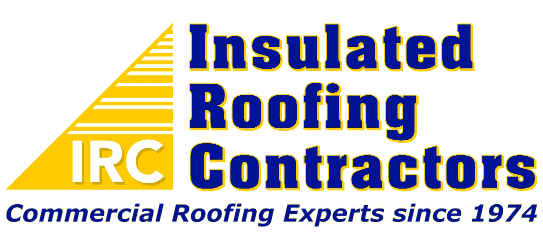Commercial roof leaks can turn into costly nightmares that damage inventory, disrupt operations, and create safety hazards. Understanding where these leaks typically originate gives property managers and business owners the knowledge needed to prevent expensive water damage before it starts.
Most commercial roof leaks don’t happen randomly. They develop in predictable areas where the roof system is most vulnerable to weather, wear, and structural movement. By identifying these common leak sources and implementing targeted roof leak prevention strategies, you can protect your building and avoid emergency repairs.
Roof Seams and Flashings Are Prime Leak Locations
Roof seam leaks represent one of the most frequent sources of commercial roof water damage. These vulnerable joints occur where different roofing materials meet or where the roof connects to walls, parapets, and other structures.
Traditional roofing systems rely on seams and fasteners that can separate over time due to thermal expansion, building settlement, and weather exposure. Metal roofing seams may develop gaps as fasteners loosen, while membrane roofing systems can experience separation at overlap points.
Roof flashing repair becomes necessary when the metal barriers around roof edges, chimneys, and equipment deteriorate. Flashing protects these critical transition points, but harsh weather conditions can cause corrosion, cracking, and loosening that allows water infiltration.
Drains and Gutters Create Frequent Leak Sources
Roof drainage problems cause significant water damage when drains become clogged or damaged. Commercial roofs depend on proper drainage to channel water away from the building, but blocked drains create standing water that finds its way through even small roof imperfections.
Gutters and downspouts that pull away from the building or develop leaks can direct water toward the foundation or back onto the roof surface. Regular cleaning and maintenance of drainage systems prevents water backup that leads to roof penetration and structural damage.
Inadequate drainage design also contributes to leak development. Roofs without sufficient slope or properly positioned drains allow water to pool in areas not designed to handle standing water, eventually causing membrane failure or seam separation.
Roof Penetrations Need Extra Attention
Every pipe, vent, HVAC unit, and equipment mounting that penetrates your commercial roof creates a potential entry point for water. Roof penetration leaks develop when the sealing around these openings deteriorates or when structural movement creates gaps.
HVAC equipment installations require multiple penetrations for refrigerant lines, electrical connections, and ductwork. The seals around these penetrations face constant stress from equipment vibration and thermal cycling, making regular inspection and maintenance essential.
Satellite dishes, antennas, and rooftop equipment also create vulnerable points where water can enter. Professional installation with proper sealing and periodic re-sealing helps prevent roof water damage from these necessary penetrations.
Prevent Leaks With Regular Inspections and Maintenance
Effective roof maintenance tips start with scheduled professional inspections that identify potential problems before they become major leaks. Most commercial roof leaks develop gradually, giving property owners time to address issues through preventive maintenance rather than emergency repairs.
Quarterly visual inspections should focus on drainage systems, flashing conditions, and any signs of standing water or membrane damage. After severe weather events, additional inspections help identify storm damage that could lead to future leaks.
Documentation of roof conditions over time helps track deterioration patterns and plan maintenance activities. Photos and detailed notes create a valuable record for warranty claims and help roofing professionals understand the roof’s history.
Proactive maintenance includes cleaning drains and gutters, re-sealing penetrations, and addressing minor repairs before they expand into major problems. Small investments in routine maintenance prevent costly emergency repairs and extend roof life significantly.
Invest in Professional Repairs and Upgrades
When commercial roof repair becomes necessary, professional installation ensures lasting solutions that address underlying causes rather than just symptoms. Experienced roofing contractors understand how different roof systems fail and can recommend roofing leak solutions that prevent recurring problems.
Modern roofing technologies like spray polyurethane foam eliminate many common leak sources by creating seamless, monolithic roof surfaces without fasteners or seams. These advanced systems provide superior insulation while dramatically reducing leak potential.
Professional repairs also include proper material selection for your climate and building conditions. Using appropriate sealants, membranes, and flashing materials ensures repairs will withstand local weather conditions and provide long-term protection.
Protect Your Investment With Expert Roof Care
Commercial roof leaks start in predictable locations, but proper prevention strategies can keep your building dry and your operations running smoothly. Regular maintenance, professional inspections, and prompt attention to vulnerable areas provide the best protection against costly water damage.
Understanding where leaks develop most frequently allows you to focus preventive efforts where they’ll have the greatest impact. From seam maintenance to drainage system care, proactive roof management protects your building investment and prevents business disruption.Concerned about leaks on your commercial roof? Contact us today! Let IRC inspect your roof’s vulnerable areas and recommend solutions to protect your building.
